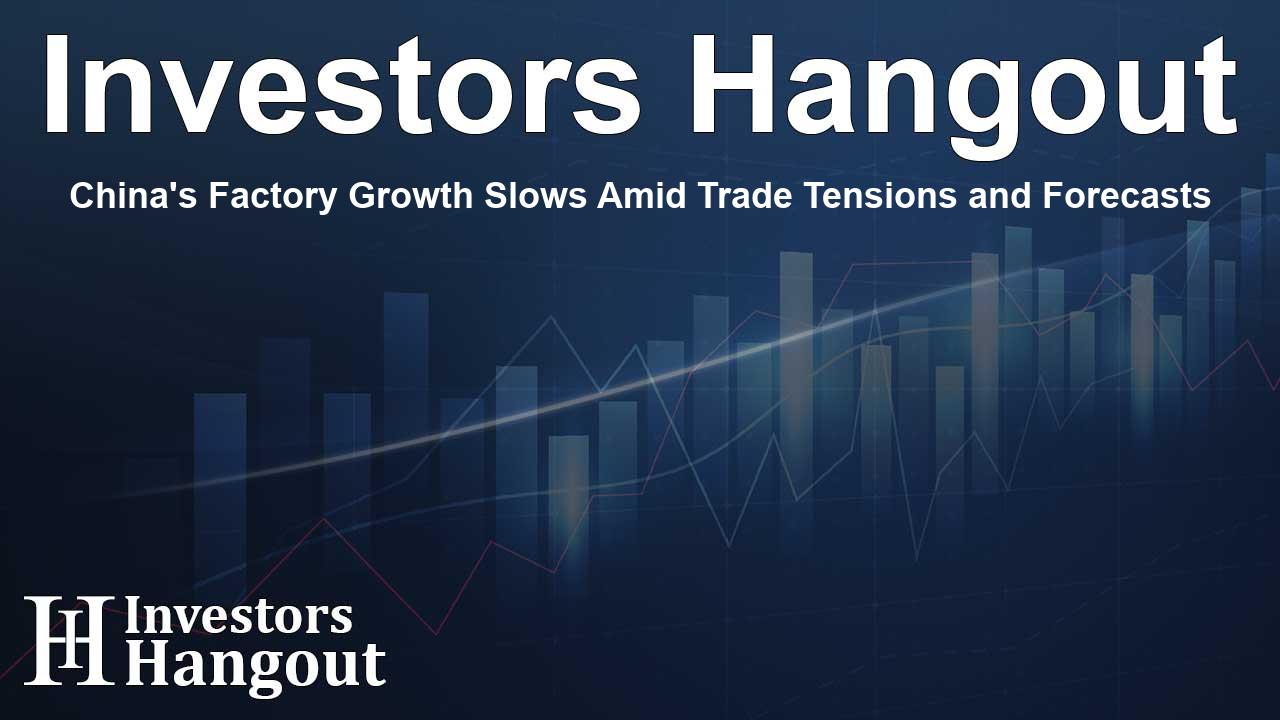China's Factory Growth Slows Amid Trade Tensions and Forecasts

China's Manufacturing Activity Shows Signs of Slowing Growth
The latest report from Beijing reveals that China's factory activity experienced growth in December; however, this growth was slower than anticipated. The Caixin/S&P Global manufacturing PMI reported at 50.5, down from 51.5 the previous month, indicating challenges in the industrial sector amidst a backdrop of declining export orders.
Impact of Trade Outlook on Manufacturing
The survey results correspond with an official report suggesting modest expansion in manufacturing activity. As concerns about the U.S.-China trade dynamics heighten, exacerbated by the upcoming administration changes, stakeholder calls for additional stimulus measures are intensifying.
Decreased New Export Orders
Data indicates that new export orders, which are crucial to China's economy, fell back into negative territory, marking their fourth decline in five months. Unstable global economic conditions combined with looming U.S. tariffs pose significant risks for China, the largest exporter globally.
Forward-Looking Views from Manufacturers
While some manufacturers initially increased shipments in response to expected tariffs, insights from the China Beige Book suggest that this momentum may have diminished. The anticipation surrounding the tariff discussions could impact future trading dynamics significantly.
Domestic Policy Measures and Economic Stabilization
In response to slowing growth, the Chinese government has implemented several policy measures aimed at stabilizing the economy. Markets are keenly observing the next steps from policymakers as they prioritize reviving domestic demand through various economic initiatives.
Optimism Despite Challenges
Despite the prevailing uncertainties, manufacturers in China are holding on to a sense of optimism about future output, although this optimism has slightly waned. Concerns surrounding growth, trade, and tariff policies remain, affecting the expected product and sales growth for the upcoming year.
Workforce Dynamics and Pricing Trends
The effect of these conditions is evident in employment trends, as staffing levels have decreased for four consecutive months. However, the rate of job loss has lessened compared to previous months, indicating a stabilizing job market despite the ongoing challenges.
Pricing Adjustments Amidst Rising Costs
Moreover, average selling prices have dropped for the first time since September even as input costs continue to rise. This adjustment is a strategy to maintain sales volumes as manufacturers absorb higher production costs.
Preparation for Complex External Environment
Experts predict a complex external economic environment in the coming year. Wang Zhe from Caixin Insight Group urges for prompt policy responses aimed at enhancing household incomes and overall living standards, emphasizing the importance of consumer spending in sustaining economic momentum.
Future Economic Initiatives
With commitments to increase pensions and expand consumer trade-in programs set for 2025, officials are keen on stimulating consumption and improving lives. These initiatives signal a proactive approach to addressing potential economic slowdowns.
Frequently Asked Questions
What is the current state of China's factory activity?
China's factory activity grew in December, but at a slower rate compared to previous months, as indicated by the Caixin manufacturing PMI.
How do trade tensions impact China's manufacturing?
Rising trade tensions, particularly with the U.S., have led to declining export orders, significantly affecting growth in the manufacturing sector.
What measures is China taking to stabilize its economy?
The Chinese government has initiated several policies to stimulate domestic demand and support economic growth amidst slowing factory activity.
Are manufacturers optimistic despite the slowdown?
Yes, many manufacturers maintain a level of optimism about future output; however, their concerns about trade and growth have increased.
What pricing trends are emerging in China's manufacturing sector?
Manufacturers are reducing selling prices to support sales despite rising input costs, marking a significant shift in pricing strategy.
About Investors Hangout
Investors Hangout is a leading online stock forum for financial discussion and learning, offering a wide range of free tools and resources. It draws in traders of all levels, who exchange market knowledge, investigate trading tactics, and keep an eye on industry developments in real time. Featuring financial articles, stock message boards, quotes, charts, company profiles, and live news updates. Through cooperative learning and a wealth of informational resources, it helps users from novices creating their first portfolios to experts honing their techniques. Join Investors Hangout today: https://investorshangout.com/
Disclaimer: The content of this article is solely for general informational purposes only; it does not represent legal, financial, or investment advice. Investors Hangout does not offer financial advice; the author is not a licensed financial advisor. Consult a qualified advisor before making any financial or investment decisions based on this article. The author's interpretation of publicly available data shapes the opinions presented here; as a result, they should not be taken as advice to purchase, sell, or hold any securities mentioned or any other investments. The author does not guarantee the accuracy, completeness, or timeliness of any material, providing it "as is." Information and market conditions may change; past performance is not indicative of future outcomes. If any of the material offered here is inaccurate, please contact us for corrections.